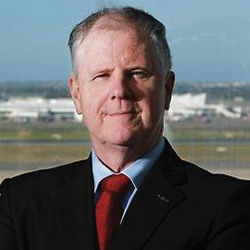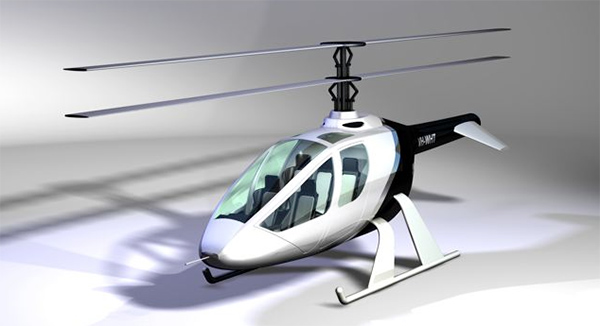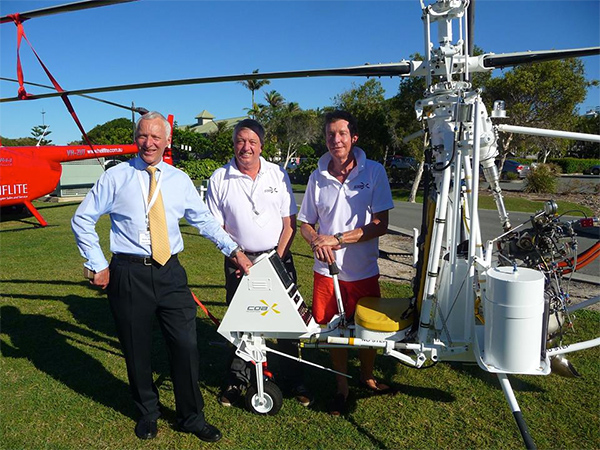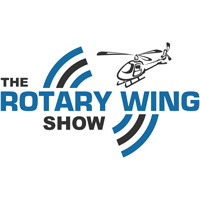Podcast: Play in new window | Download
Subscribe: RSS

Today’s episode is about a single seat helicopter design being developed in Australia that makes use of a coaxial rotor system.
And who better to talk us through the design than Airbus A380 captain Richard Woodward. That’s right, Richard is not only Manager of Flying Operations and Chief Test Pilot at CoaX Helicopters but also a line Captain with QANTAS flying the A380.
Some back of the napkin calculations show that you could put 13 of the 20′ diameter helicopters side by side under the A380 wings.
The coaxial rotor design uses two main rotors mounted above each other on the one mast. Each rotor spins in the opposite (contra rotating) direction thereby cancelling out the torque created as a result of powered flight.
This also means that no tail rotor is required – less power lost to the tail rotor system, reduced aircraft length, removal of a significant ground handling danger and a delicate, potential aircraft point of failure.
The dual rotors also allow for a reduction in rotor diameter and rotor tip speeds.
[Tweet “The coaxial design provides a x1.4 rotor diameter advantage – compact and more performance.”]
Richard had his start in aviation through the Royal Australian Air Force where he flew Hueys and later moved into SAR and then test flying.
In the interview Richard talks about the process the CoaX Helicopter’s team has had to go through to purchase an aircraft design that was created in the 1950s, reverse engineer the original design drawings with the help of remaining airframes and then reconstruct and re-engineer to get a modern and improved commercially viable flying example. He describes the process as ‘eye watering’.
The results speak for themselves with a very fun and compact helicopter – check out the video further down the page.
Some additional interesting things about coaxial rotor systems for those of us not used to them:
* top speed is limited by flapping to equality of the rotors – where one side is high the other is low reducing the clearance between the two discs
* retreating blade stall is not such a factor because of the lower blade tip speeds (smaller diameter)
* reduced blade tip speeds provide a lower noise signature
* top speed is almost practically the same in any direction – tail fins do come into play
* 9 – 17% of engine power is lost to the tail rotor in a conventional helicopter
* yaw control in coaxial rotor designs can be problematic but is overcome in Coax Helicopter’s designs by drag flaps on the end of the rotor blades that provide a torque differential between the blades
* yaw pedal inputs required are small and relatively steady with no tail rotor effects to worry about
* center of gravity is something that needs consideration as much of the weight is close to the mast
* gust response in the hover is reduced as the contra rotating rotors experience opposite effects
Kamov and Sikorsky would seem to be the only other current manufacturers with flying coaxial rotor helicopters.
Podcast: Subscribe in iTunes | Play in new window | Download
In this week’s episode:
01:20 Thanks for sharing the show with your connections
02:00 HAI Heli Expo 2015
03:05 Clean Up Australia Day – with helicopters
04:20 Richard Woodward started flying in 1971 with the RAAF
06:00 Flying Hueys
07:11 Peacekeeping ops in the Sinai
08:40 SAR, instructing and Empire Test Pilot Course
10:40 Early NVG test and development and Papua New Guinea HDA ops
14:40 Blackhawk introduction into Australian service
16:50 Flying 747s, 767, A330 and A380 No.1 in France
18:50 Advantages that helicopter pilots take to jumbos
20:30 CoaX Helicopters and aircraft genesis
22:00 Torpedo carrier and air target towing
22:40 Co-axial rotor design and shafts
24:10 Limitations and advantages, aerodynamics
26:20 Generating yaw control
28:40 Tail rotor absorbs 9-17% of power in a normal helicopter
29:30 Reduction in ground handling danger due no tail rotor
31:00 Noise and engine operation
32:10 Center of gravity considerations
33:40 Scaling the design up and production
36:40 Flying characteristics and manoeuvring
38:00 Licensing and training
42:50 Autorotations
44:30 Helicopter monitoring system fitted as standard
47:40 Reaction of fellow A380 aircrew
49:11 Converting original paper designs into 3D models and engineering
51:30 Looking for investment and purchase orders
52:30 Episode Sponsors trainmorepilots.com
52:55 American Helicopter Museum and Helicopter Museum, UK will be part of World Helicopter Day, 16 Aug 2015
Links from this week’s episode:
CoaX Helicopters
World Helicopter Day
[leadplayer_vid id=”54FC314A2502D”]
[Tweet “Original idea was for helicopter to be dropped to downed aircrew so they could fly home”]
[Tweet “Autorotates quite well, comes down at a typical helicopter rate, approx 1400fpm”]


In the show I talk about a Clean Up Australia Day event I was part of where we used a MD500 to external load out rubbish from mangroves near Redcliffe airfield. Pics below.
Be part of the conversation and get involved in the comments section below. What questions do you have about this one man helicopter or the coax design?

I would like to see a two seater in the concept version
Good Morning/Afternoon,
Was recently on your webpage was very curious the things on your
co-axial helicopter but where is the idea for 5 place helicopter
and why doesn’t your company publish how you built your machine
and what you used ie use what type of turbine engine,how you designed the shaft.all these things would be nice to know if someone wanted to build a homebuilt one .Thank you for your time in this matter look forward to hearing from your company
Copycat of Gyrodyne RON-1 Rotorcycle.